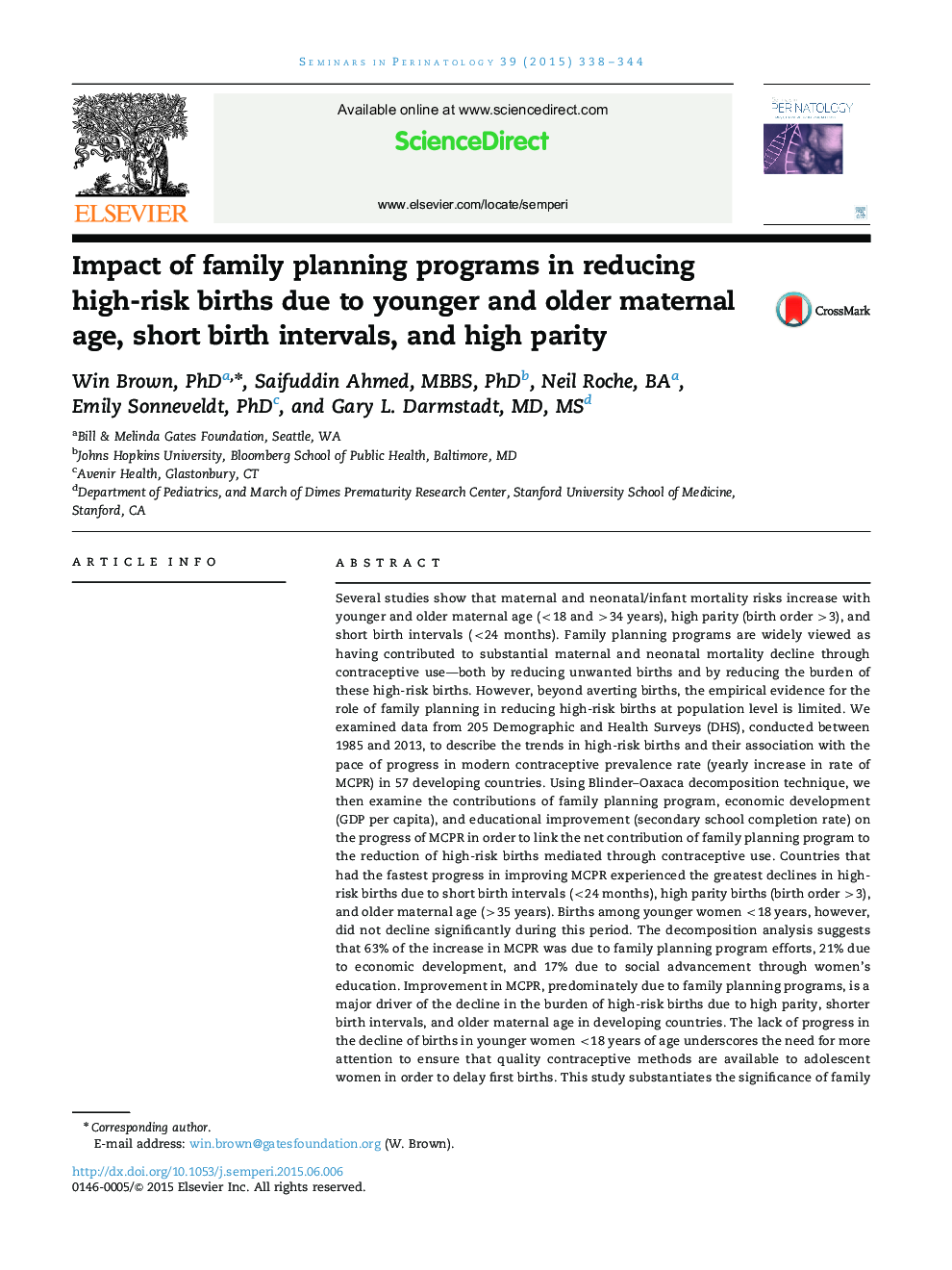| کد مقاله | کد نشریه | سال انتشار | مقاله انگلیسی | نسخه تمام متن |
|---|---|---|---|---|
| 6155784 | 1247530 | 2015 | 7 صفحه PDF | دانلود رایگان |
عنوان انگلیسی مقاله ISI
Impact of family planning programs in reducing high-risk births due to younger and older maternal age, short birth intervals, and high parity
ترجمه فارسی عنوان
تأثیر برنامه های برنامه ریزی خانواده در کاهش خطر ابتلا به زایمان با توجه به سن مادر و جوان تر، فواصل کوتاه تولد و میزان بالای زوج
دانلود مقاله + سفارش ترجمه
دانلود مقاله ISI انگلیسی
رایگان برای ایرانیان
موضوعات مرتبط
علوم پزشکی و سلامت
پزشکی و دندانپزشکی
پزشکی و دندانپزشکی (عمومی)
چکیده انگلیسی
Several studies show that maternal and neonatal/infant mortality risks increase with younger and older maternal age (<18 and >34 years), high parity (birth order >3), and short birth intervals (<24 months). Family planning programs are widely viewed as having contributed to substantial maternal and neonatal mortality decline through contraceptive use-both by reducing unwanted births and by reducing the burden of these high-risk births. However, beyond averting births, the empirical evidence for the role of family planning in reducing high-risk births at population level is limited. We examined data from 205 Demographic and Health Surveys (DHS), conducted between 1985 and 2013, to describe the trends in high-risk births and their association with the pace of progress in modern contraceptive prevalence rate (yearly increase in rate of MCPR) in 57 developing countries. Using Blinder-Oaxaca decomposition technique, we then examine the contributions of family planning program, economic development (GDP per capita), and educational improvement (secondary school completion rate) on the progress of MCPR in order to link the net contribution of family planning program to the reduction of high-risk births mediated through contraceptive use. Countries that had the fastest progress in improving MCPR experienced the greatest declines in high-risk births due to short birth intervals (<24 months), high parity births (birth order >3), and older maternal age (>35 years). Births among younger women <18 years, however, did not decline significantly during this period. The decomposition analysis suggests that 63% of the increase in MCPR was due to family planning program efforts, 21% due to economic development, and 17% due to social advancement through women's education. Improvement in MCPR, predominately due to family planning programs, is a major driver of the decline in the burden of high-risk births due to high parity, shorter birth intervals, and older maternal age in developing countries. The lack of progress in the decline of births in younger women <18 years of age underscores the need for more attention to ensure that quality contraceptive methods are available to adolescent women in order to delay first births. This study substantiates the significance of family planning programming as a major health intervention for preventing high-risk births and associated maternal and child mortality, but it highlights the need for concerted efforts to strengthen service provision for adolescents.
ناشر
Database: Elsevier - ScienceDirect (ساینس دایرکت)
Journal: Seminars in Perinatology - Volume 39, Issue 5, August 2015, Pages 338-344
Journal: Seminars in Perinatology - Volume 39, Issue 5, August 2015, Pages 338-344
نویسندگان
Win PhD, Saifuddin MBBS, PhD, Neil BA, Emily PhD, Gary L. MD, MS,
